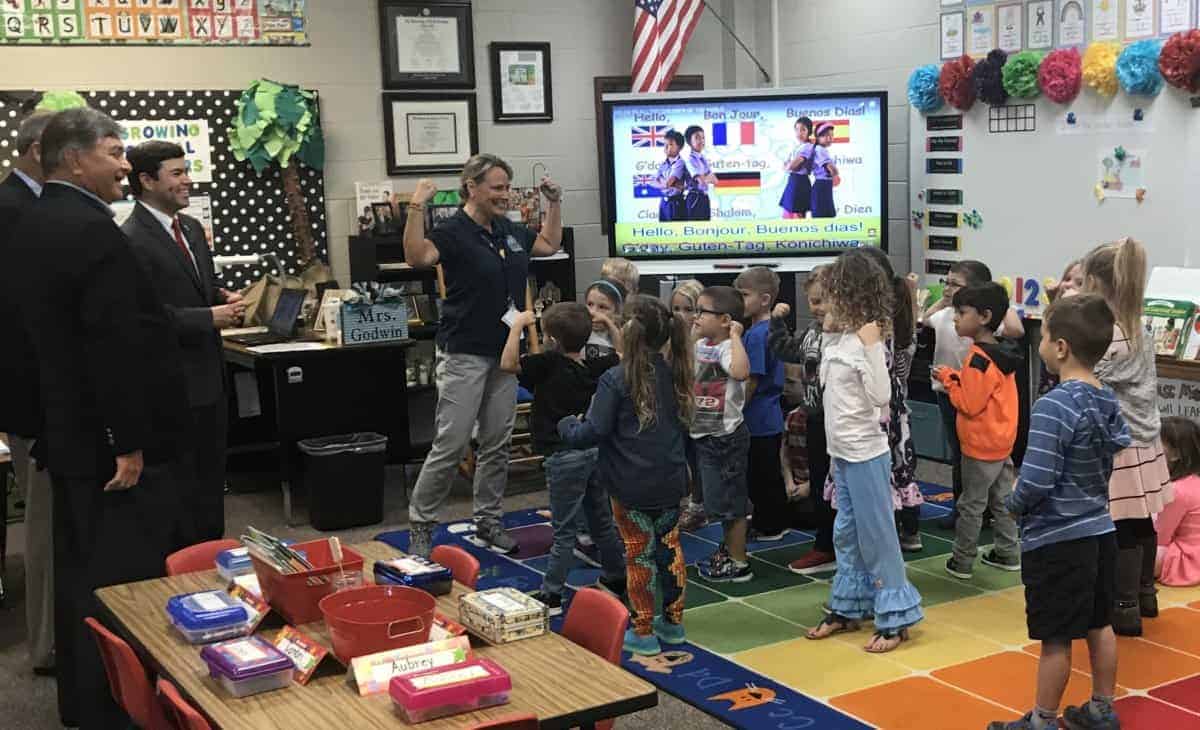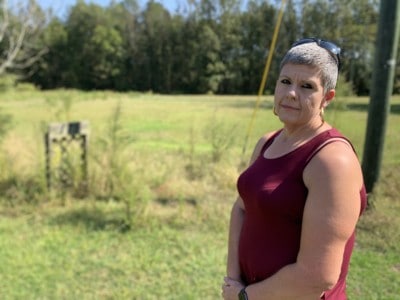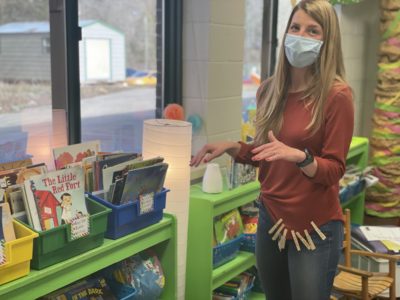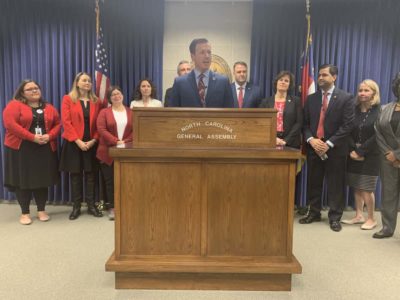Children poured into the lobby and down the halls of Dixon Elementary in Onslow County, with state and school officials, principals, and teachers cheering them on as they spilled into their classrooms for the first time in 55 days.
The long road to recovery continues for Florence-impacted counties across Eastern North Carolina, but with the opening of six schools in Onslow County on Monday, every district has now welcomed students back and teaching commences.
“This is a happy day,” State Superintendent Mark Johnson said. “We are all back in school.”
Johnson was joined by Sen. Harry Brown, R-Onslow and Rep. Phil Shepard, R-Onslow at Dixon Elementary — the three on hand to applaud the occasion, high-five students, and deliver supplies donated by state residents and well-wishers from all over the country.
“We have to remember all across NC that there were so many students that have suffered so greatly during the storm,” Johnson said. “But today was a good day. Today we celebrated all those students coming back in.”
Students at Dixon were hugging teachers and each other, laughing and clapping and jumping up and down as they arrived. They were out of school for almost two months.
“It’s great joy,” kindergarten teacher and North Carolina 2017 Teacher of the Year Lisa Godwin said. “I think some of the kids were a little nervous, and I’ll be honest with you, I was a little nervous last night, too. It felt like the first day of school again.”
As Godwin welcomed her students back, the breadth and depth of the impact of being out of school was immediately apparent. Teachers have an important job to impart knowledge, but they — along with their schools — are a first line of defense against shortcomings children face everyday, perhaps most clearly demonstrated by the food they are able to provide children who may otherwise struggle to eat outside of school.
So the first order of business for Godwin and other county teachers: “We wanted to make sure they had eaten breakfast, first of all. Because a lot of our families are still having some difficulties. There are a lot that are still displaced, and food is an issue,” Godwin said.
After making sure students weren’t hungry, teachers moved on to making sure they were fed in other important ways, also.
“It’s not going to be about just academics this year,” Godwin said. “It’s truly going to be about the whole child, making sure that they’re emotionally and psychologically and spiritually fed and looked after and cared for.”
Godwin saw Monday as another important step in bringing students back to normalcy. She remembers seeing the trauma and fear on the children’s faces when she would meet them around the community in the immediate aftermath of the storm. Welcoming them back on Monday, she sees they are stronger and more prepared.
“To get our kids back in school today is huge,” Brown said. “I think you can see the excitement in the kids and the parents as well. And the teachers — the teachers and the administration. It’s a big day for them, too, because they have a passion for teaching and spending time with our students, and you can see it today.”
In Onslow, like in other counties impacted by Florence, teachers couldn’t wait to see their kids again. They reached out to one another and organized meet-ups with their students, which they called “pop-up classes.” After the storm, teachers reached out to their schools and the district office and, soon, pop-up classes were organized across Onslow County where parents could drop their kids off with their teachers for a couple hours a week and keep them in the habit of learning.
At one location, “it was almost like a mini school out there with their car riders and everything,” said Mark Bulris, executive director of elementary education at Onslow County Schools. “They had drop off and pick up and everything going on.”
“But it’s always great to come home and be back in our natural surrounding,” Godwin said.
For Johnson, Monday was a happy day but not the end of relief efforts by any measure.
“We know this is a long road to recovery,” he said. “Just because they’re back in school today doesn’t mean that we’re done.”
Tarps covered sections of roofs at some schools as rain drizzled down on Monday. Gyms and cafeterias, including the one at Dixon, still need repairs. And the process of helping students who are still displaced, students who are temporarily residing outside the county, and students who have lost personal belongings continues.
The most immediate tasks include working with insurance providers to get claims paid before moving on to working with the federal government on federal disaster relief. Johnson knows there will still be gaps in need and more help — beyond the $60 million allocated by the General Assembly — may be needed from the state.
The aftermath of Florence is still visible in Onslow County. Personal belongings remain piled outside homes in certain areas, felled trees lay on the side of roads, and, even in the rain, crews are working on home repairs. Onslow County received about $15 million of the state’s $60 million allocation, but Brown said, “I’m not sure it’s enough, to be quite honest. As we work through the damage here, we might have to go back and get more.”
For his part, Johnson said he is committed to walking with schools as they recover and has been heartened by the leadership and unity he has witnessed across the state as officials and communities come together to lend a helping hand.
“I learned the resilience of North Carolina,” Johnson said. “It is truly phenomenal to see how leadership stepped up. I’ve been in Raleigh for a few years now — I’ve never seen cooperation and bipartisanship like I have seen during the storm. I was very, very proud to be part of that.”
Among the flurry of activity still ongoing to support and repair damaged schools, efforts are also underway to get ahead of the next big storm — should it occur. State officials were heartened to hear about the pop-up classes but want to make sure teachers have the resources they need in advance should the need arise for them again.
School construction will also be looked at, as many of the most severely damaged schools were older ones. For instance, schools with flat, metal roofs saw the wind pick the covering up and shake it like a blanket, allowing water infiltration. Officials will be studying more effective structural design, such as A-frame roofing.
“We know that when we see a storm coming the next time,” Johnson said, “we need to be ahead of the curve.”







